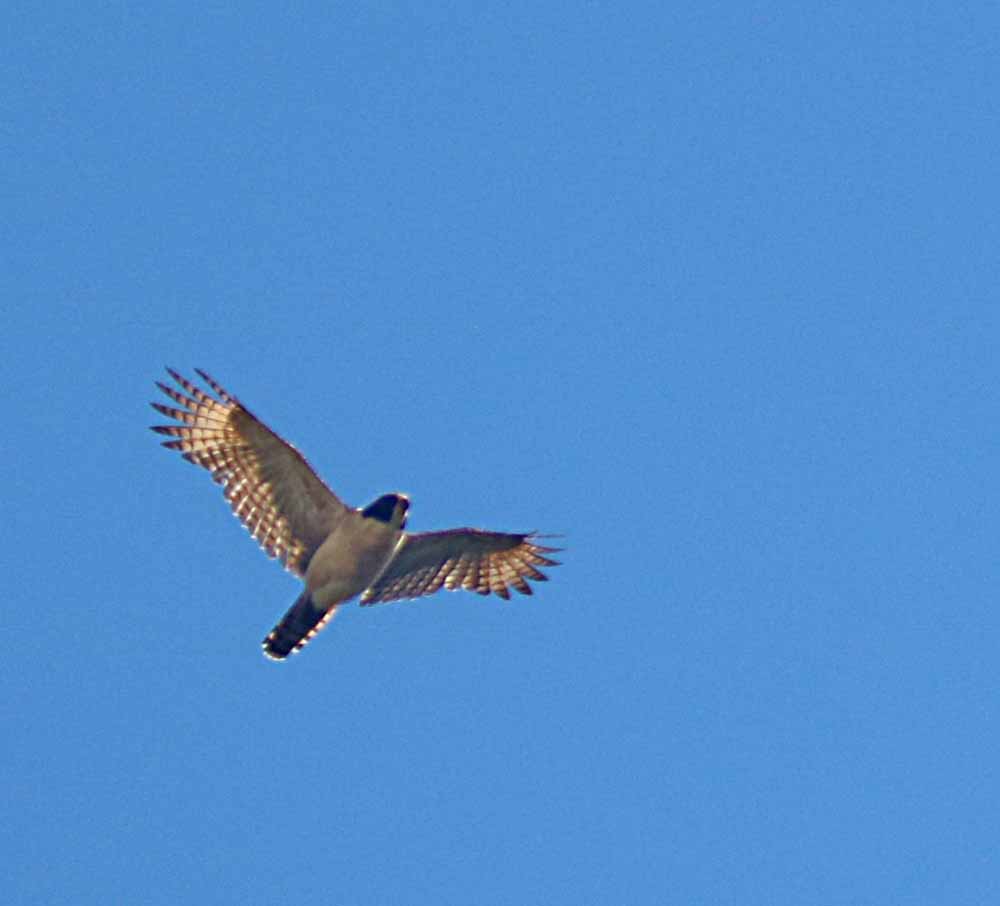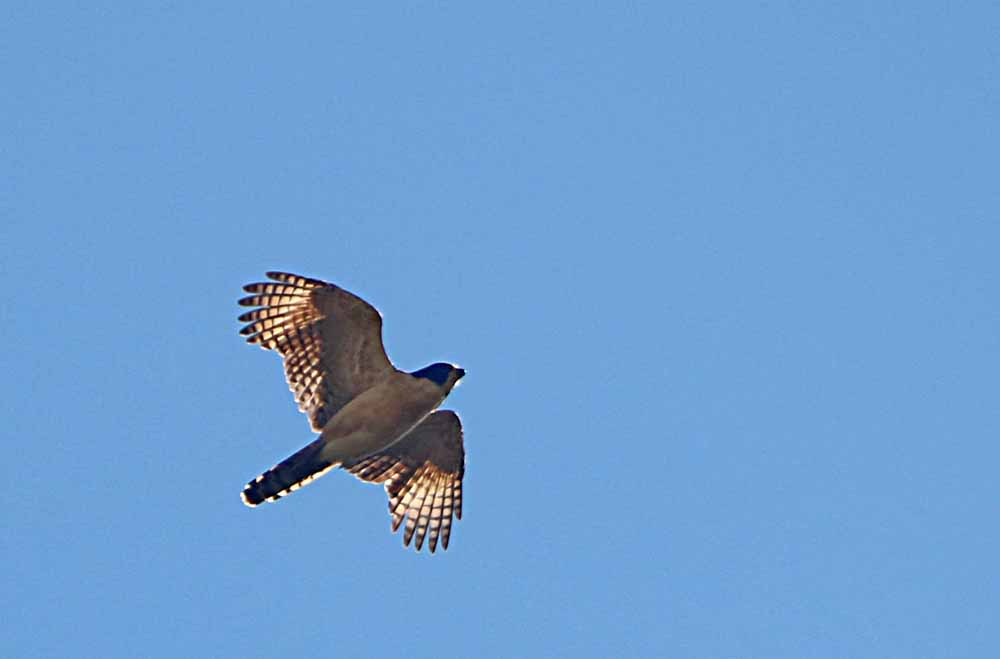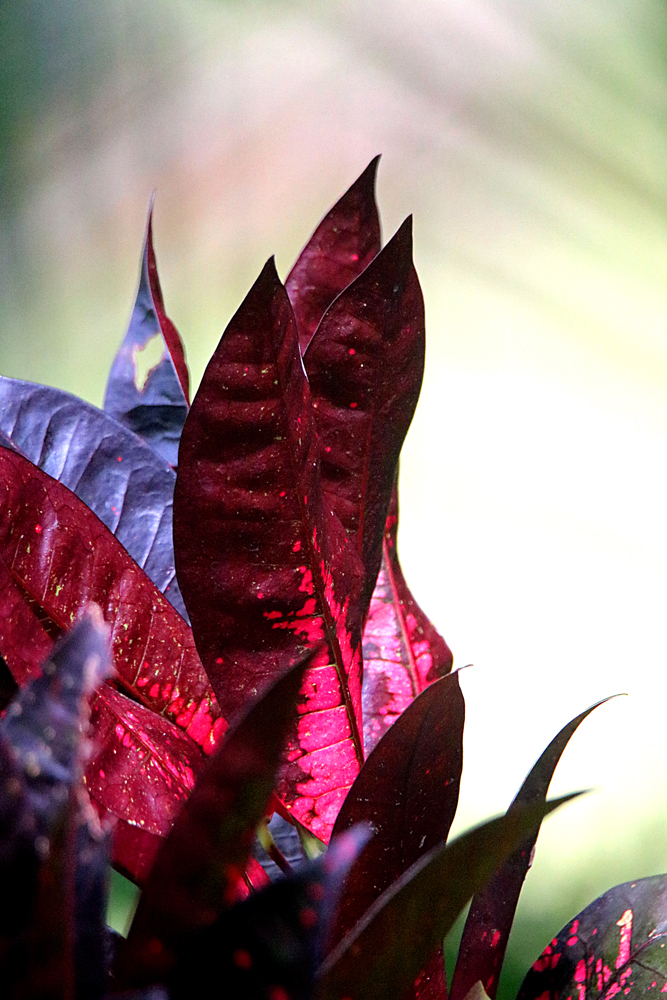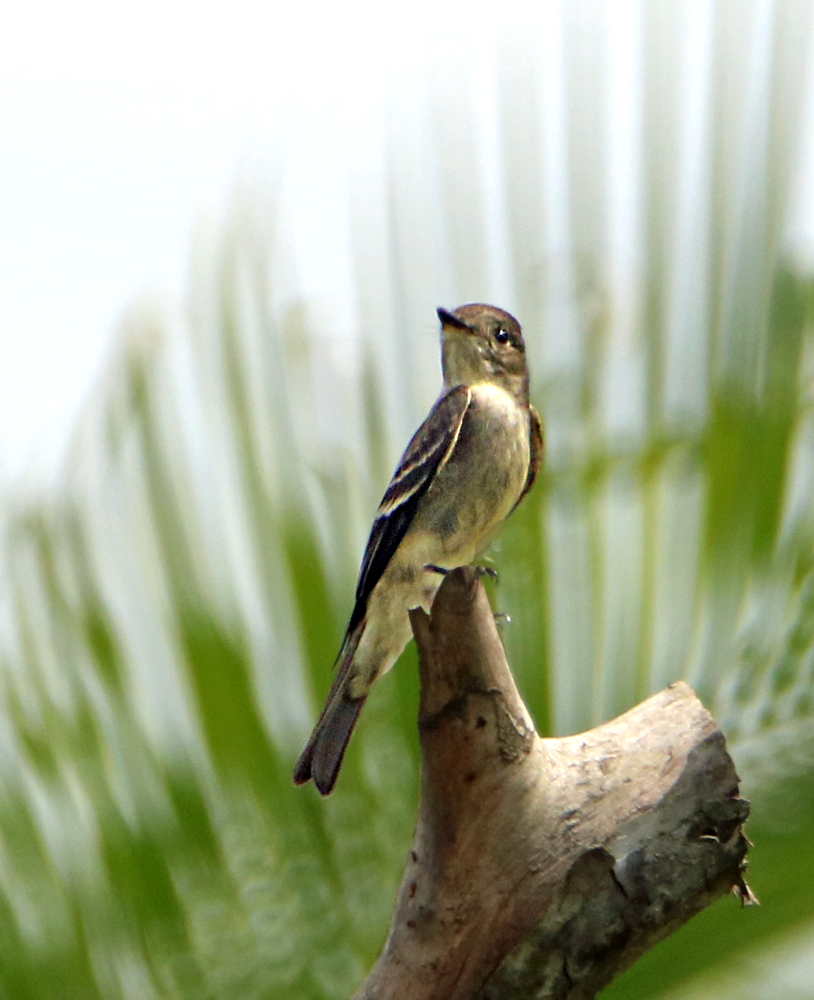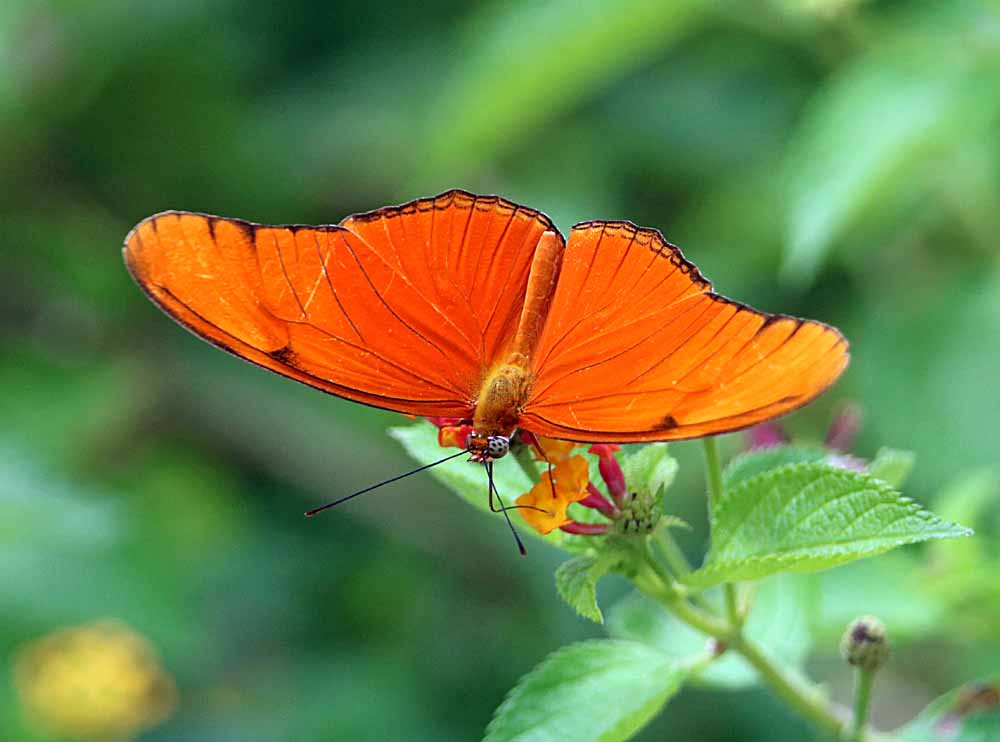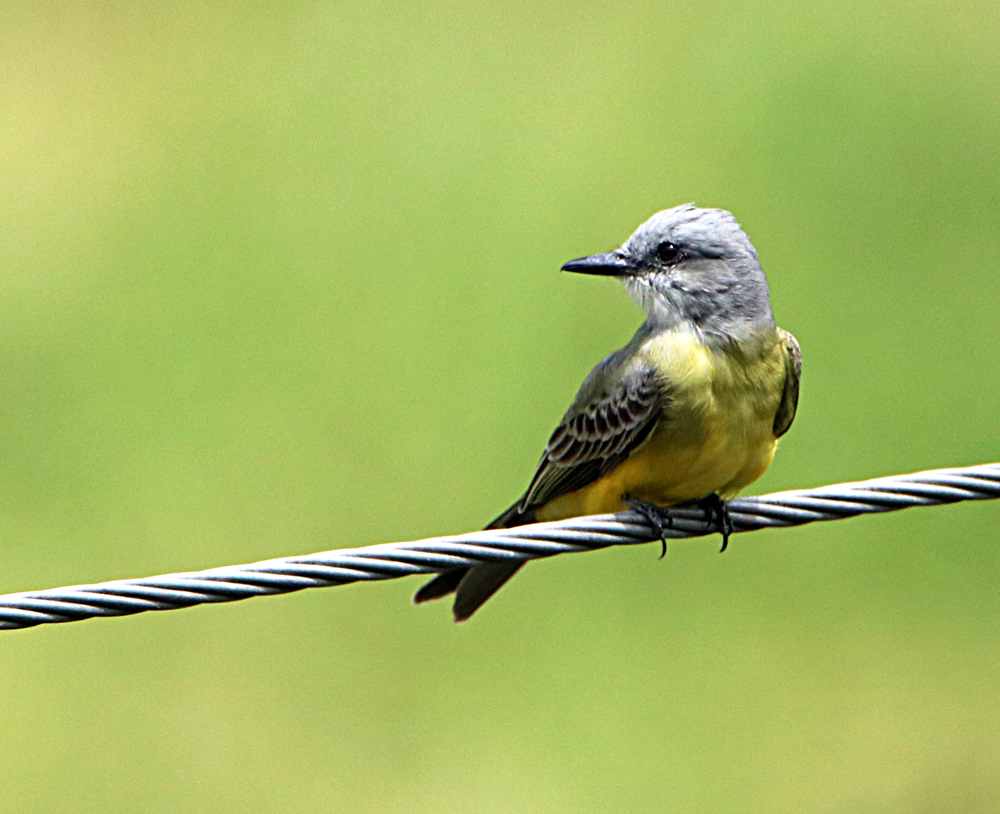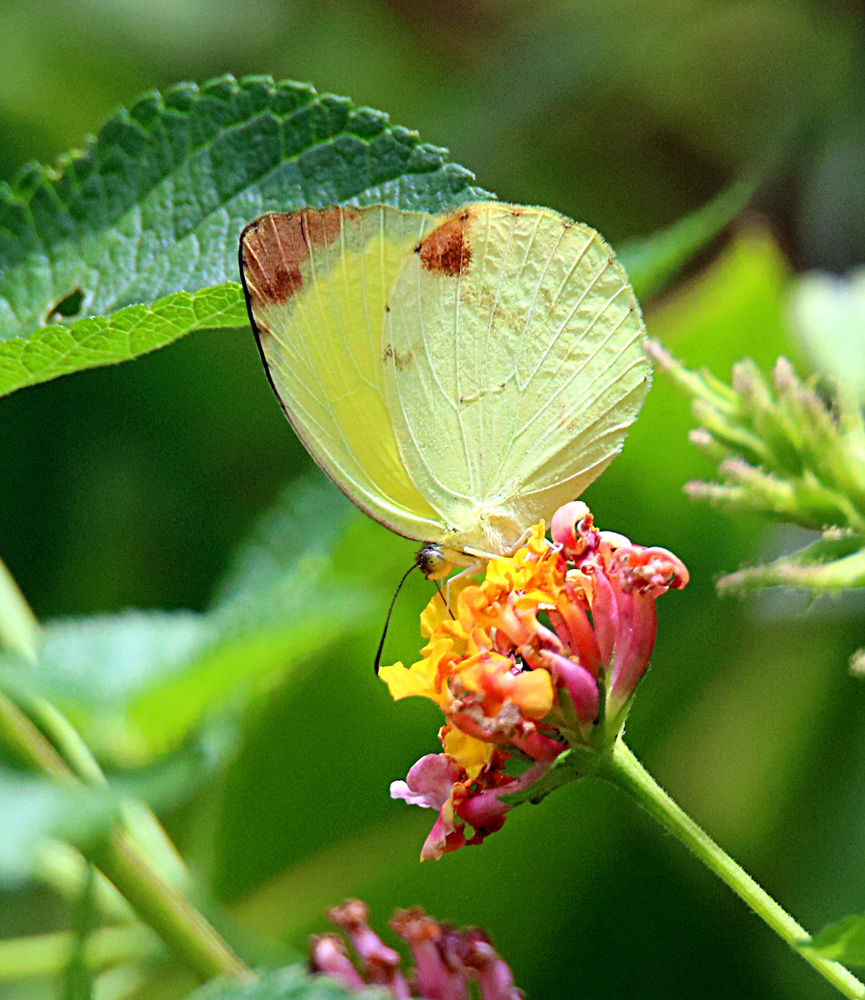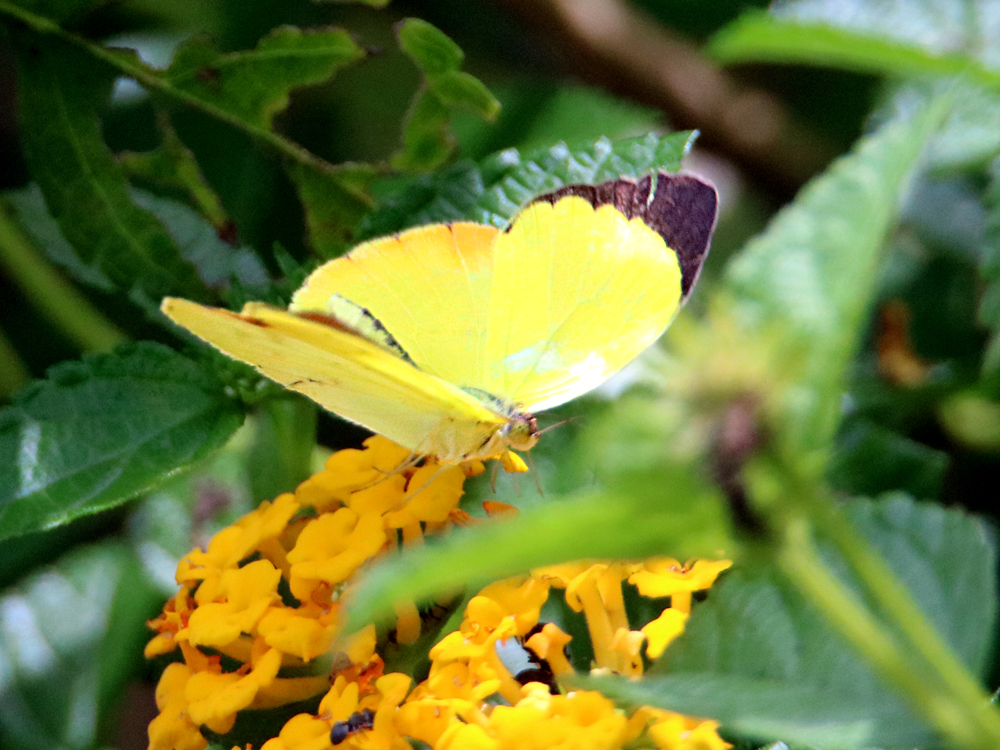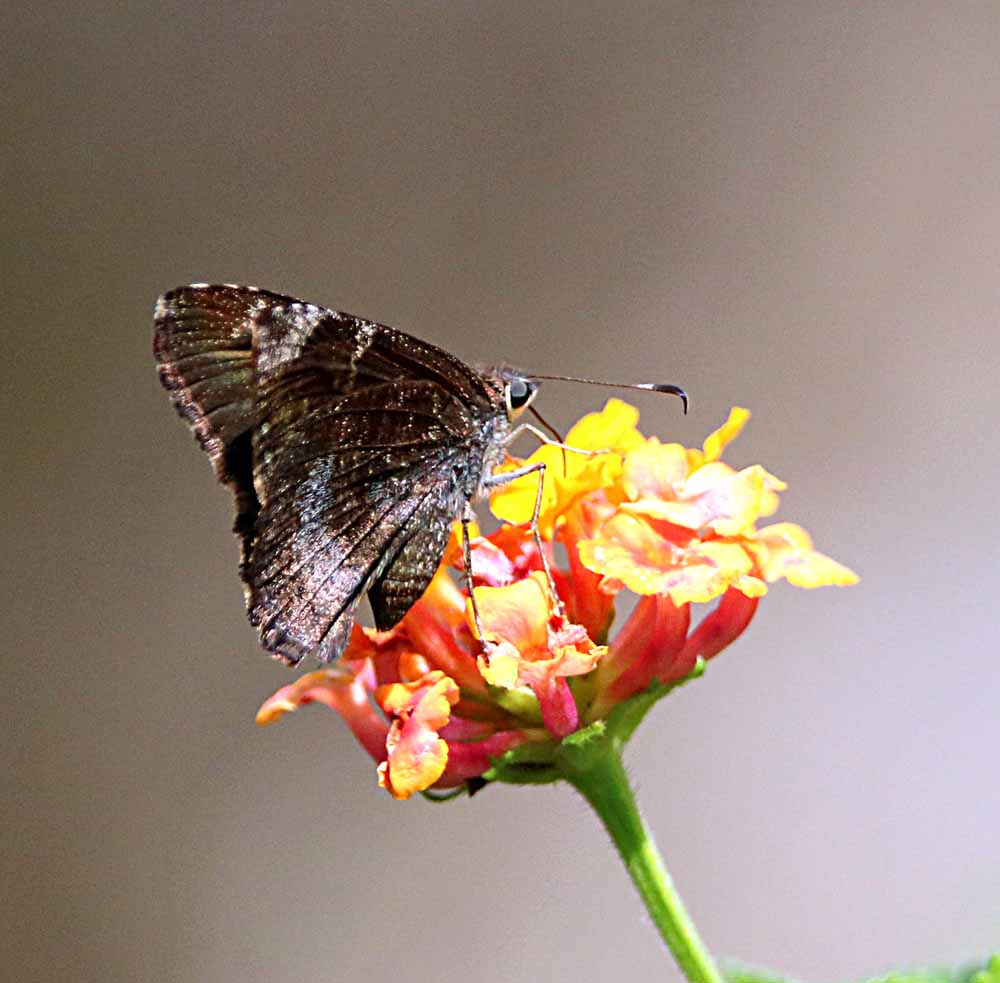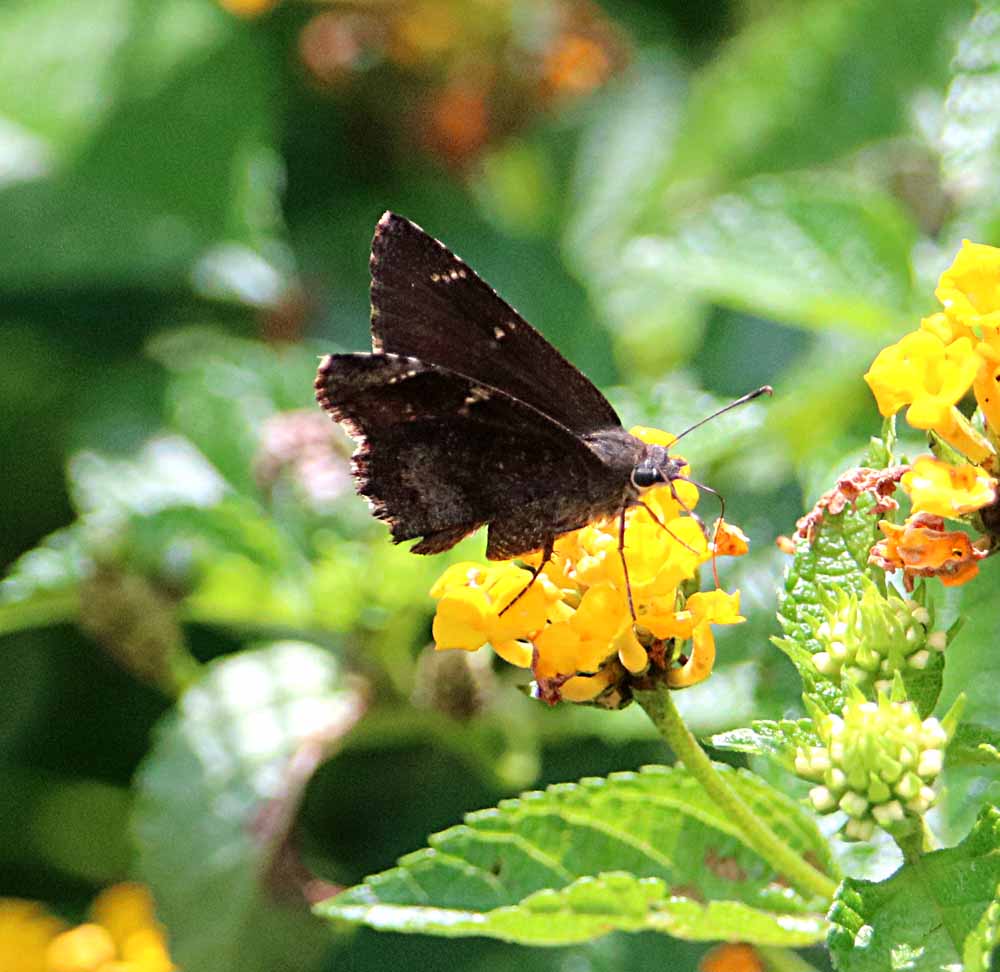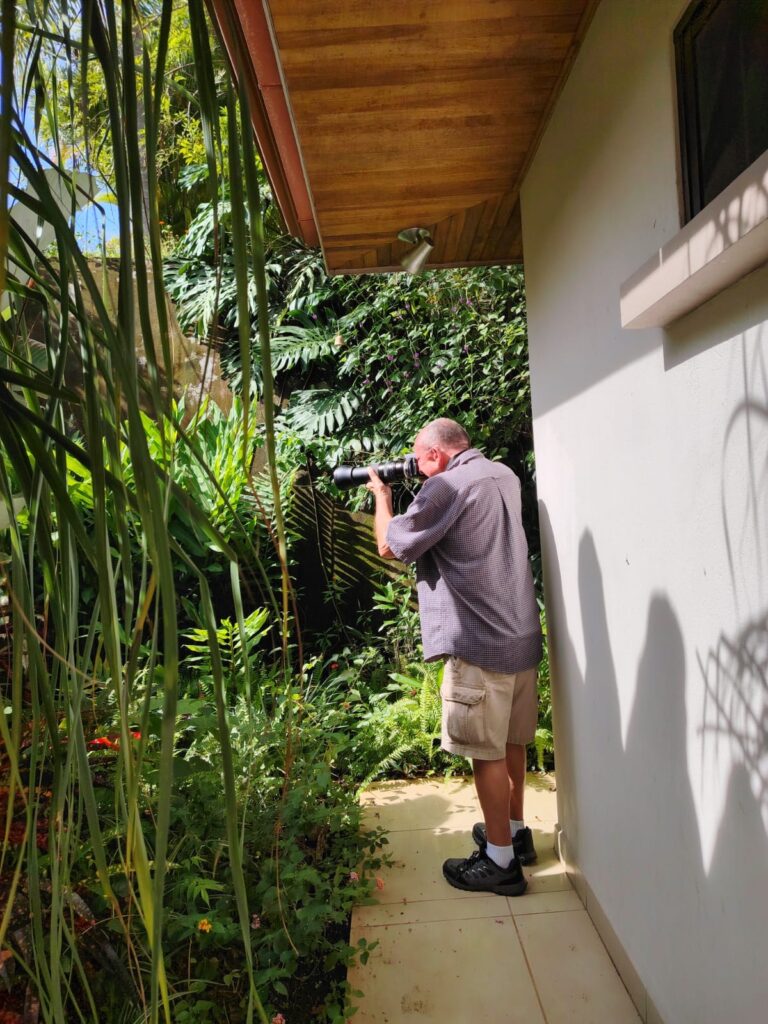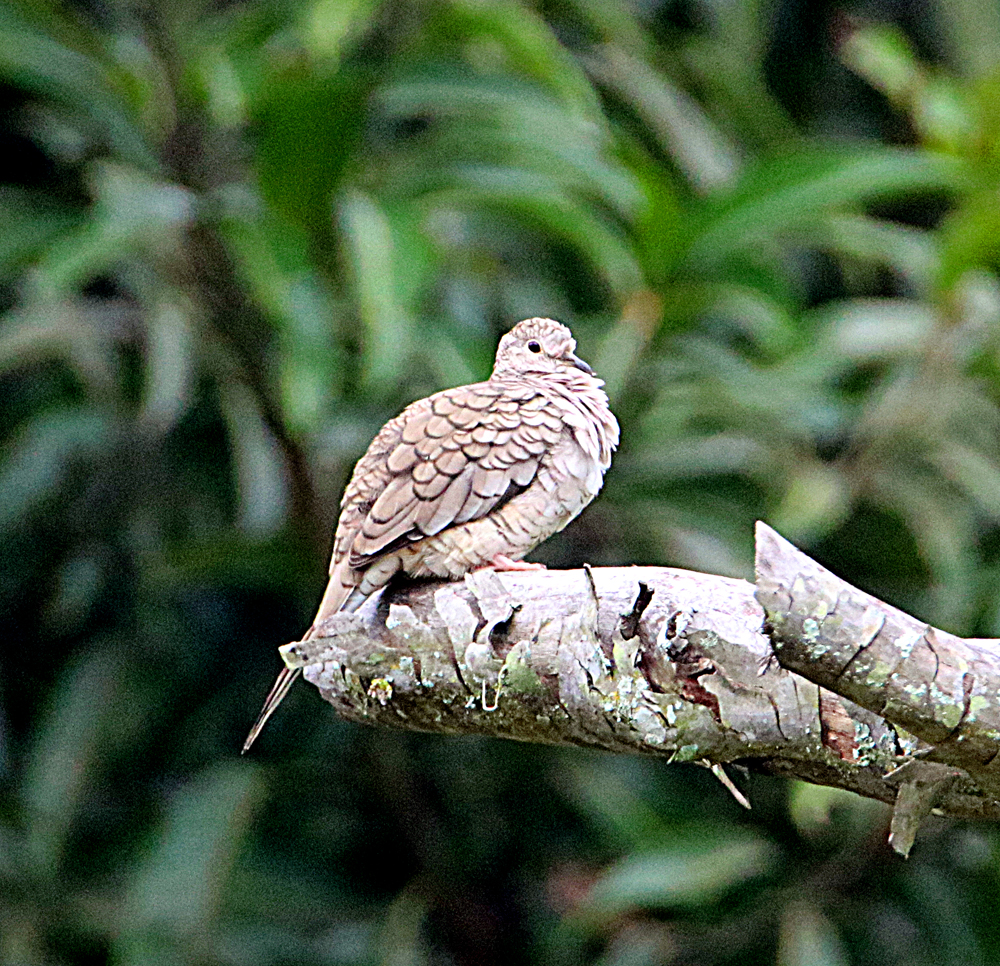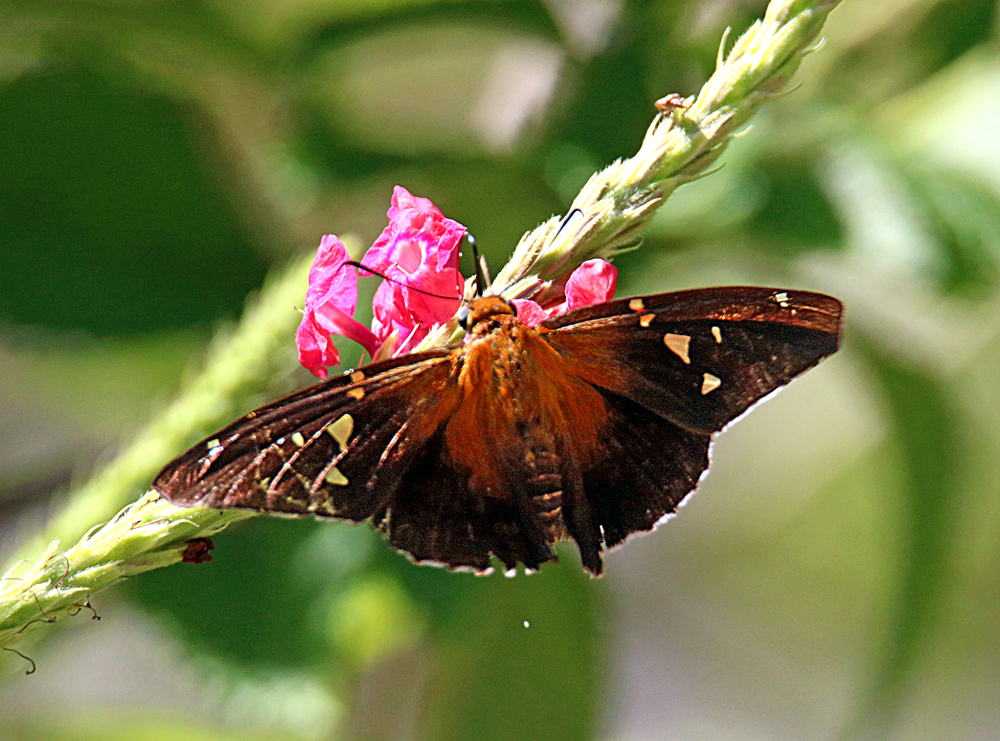. . . but none up close. For the last couple of days I’ve heard the call or song of the Laughing Falcon, Herpetotheres cachinnans (my gallery link) coming from one of the many big trees on the hill north of me. Yesterday I was trying to find them from a distance when at least 3 of them flew overhead, possibly to K’s, above me, since he got photos of some in his trees. 🙂 I have usually had to go to national parks to see this interesting falcon, but now they are here. They are the same size as many hawks and I think an attractive bird. Another neighbor, Steve, has had one in one of his trees. Here’s two shots of one flying overhead . . .
